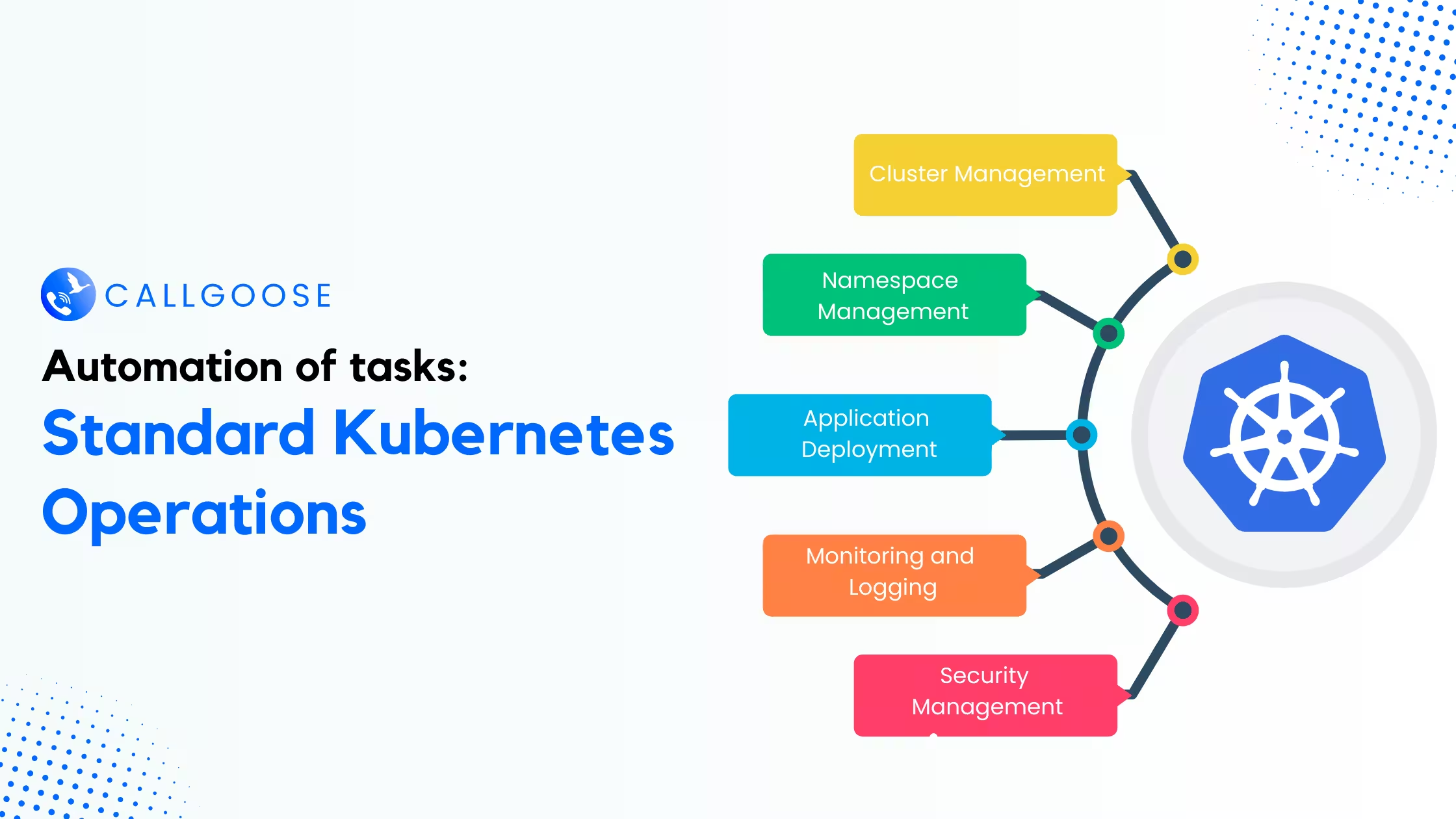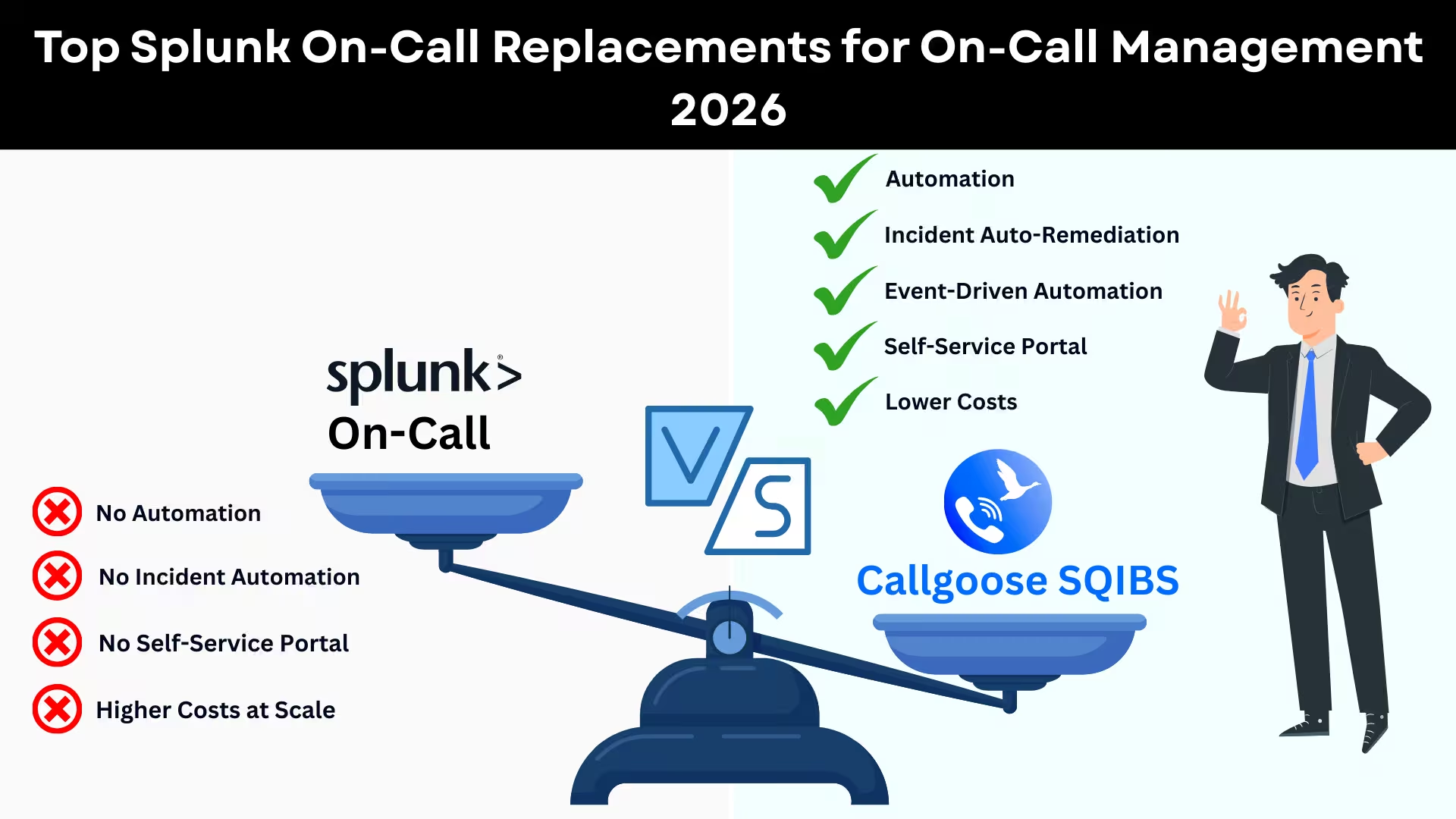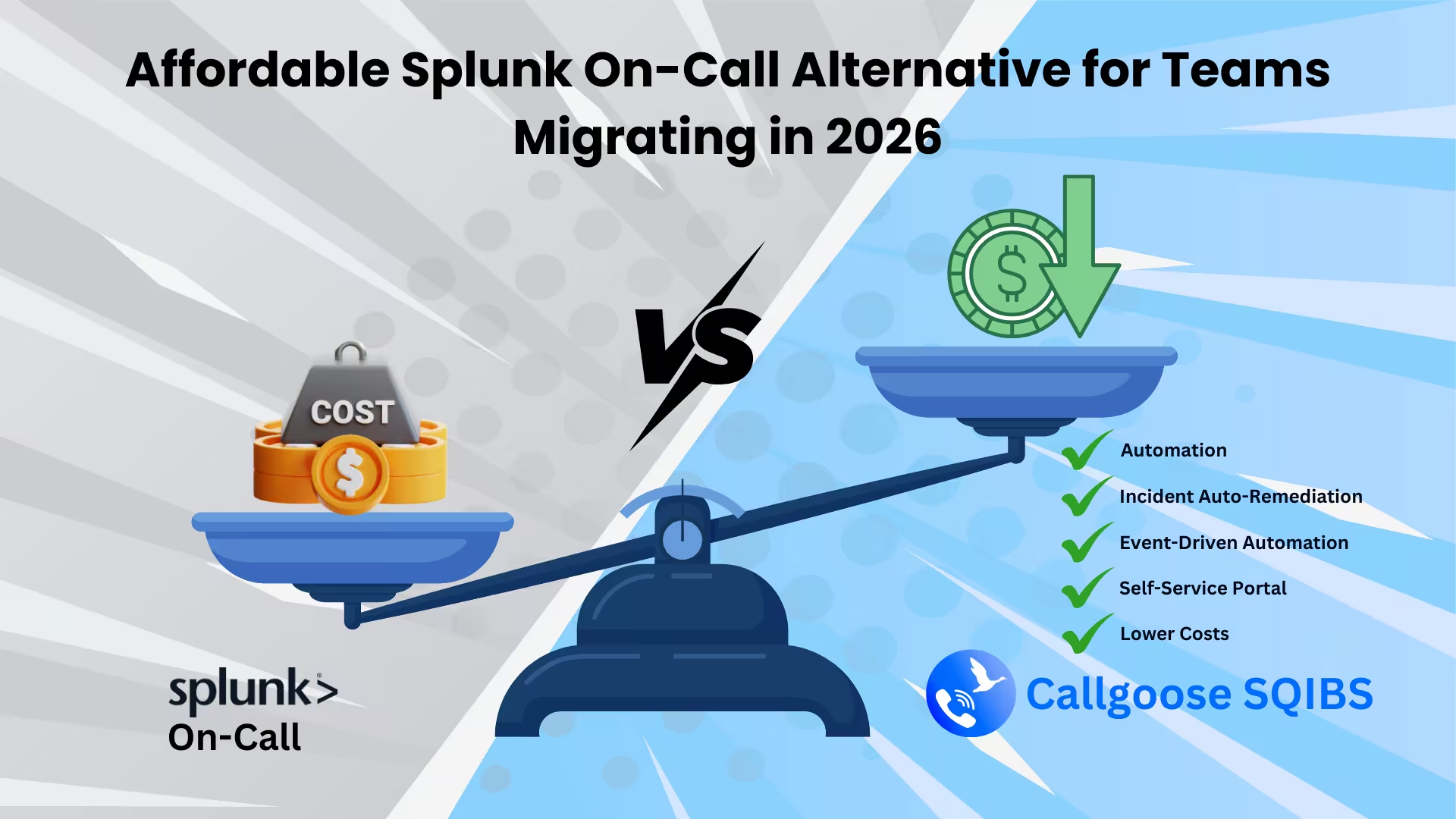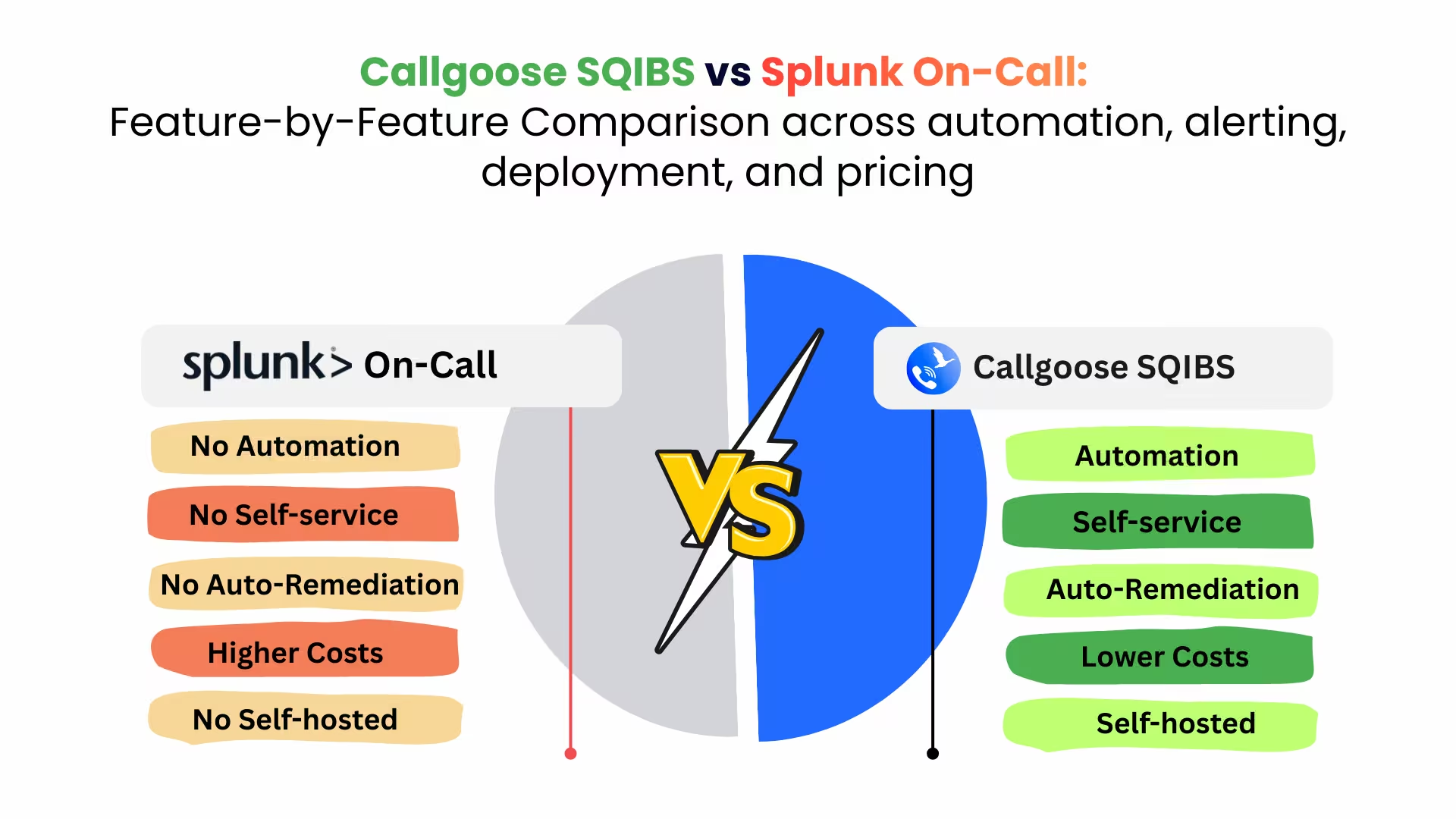
CALLGOOSE

CALLGOOSE
BLOG
16 December 2024 | Tony Philip
5 Minute Read
Here’s a comprehensive list of standard Kubernetes operations that are commonly automated in the IT world. Automating these tasks can help streamline cluster management, improve efficiency, and ensure consistency and reliability across deployments.

To automate these operations, you can leverage various tools and platforms:
By automating these standard Kubernetes operations using the Callgoose SQIBS Automation Platform, you can ensure that your cluster remains resilient, secure, and efficient, while also freeing up your team to focus on more strategic tasks.
Refer to Callgoose SQIBS Incident Management and Callgoose SQIBS Automation for more details.

BLOG
5m Read
Which Tool Can Replace Splunk On‑Call Without Losing Enterprise Features 2026 - Callgoose SQIBS offers automation, self-service, multi-channel alerts, and flexible deployment
09 January 2026
|
Sophia Mark
Introduction Splunk On‑Call is a widely adopted alerting platform, but organizations increasingly find it lacks automation, self-service, and multi-lingual capabilities. For enterprises aiming to main...

BLOG
5m Read
Why Teams Are Replacing Splunk On-Call in 2026 with More Affordable, Automated Solutions - Smarter Alternative with Callgoose SQIBS
09 January 2026
|
Sophia Mark
Introduction As incident management becomes more automation-driven, organizations are re-evaluating the value of traditional alerting tools like Splunk On‑Call. While Splunk On‑Call is reliable for on...

BLOG
5m Read
Callgoose SQIBS vs Splunk On‑Call: Feature-by-Feature Comparison 2026 - automation, self-service, alerts, and pricing
09 January 2026
|
Sophia Mark
Introduction When evaluating incident response platforms in 2026, organizations must consider more than just alert delivery. Splunk On‑Call provides alerting and on-call management but lacks automatio...

CALLGOOSE
SQIBS
Advanced Automation platform with effective On-Call schedule, real-time Incident Management and Incident Response capabilities that keep your organization more resilient, reliable, and always on
Callgoose SQIBS can Integrate with any applications or tools you use. It can be monitoring, ticketing, ITSM, log management, error tracking, ChatOps, collaboration tools or any applications
Callgoose providing the Plans with Unique features and advanced features for every business needs at the most affordable price.
Unique Features